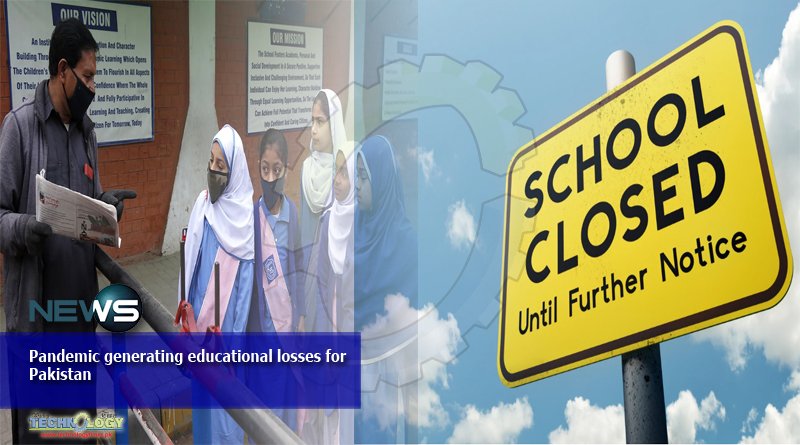According to UNESCO, 190 countries, including Pakistan, have temporarily closed educational institutions to contain the spread of the corona virus. It is effective decision to ensure social distancing but it is causing educational losses at huge level.

Educational institutes closures had impacted 91 percent of the world’s student population. The learning of approximately 1.6 billion students has been interrupted and leading to complete educational losses. The COVID-19 pandemic has negatively impacted the education of millions of students in Pakistan.
The impact, no doubt, is negative and disproportionate. The closures are having a more negative impact on students from low-income families or students of rural areas. Education is in disaster due to the pandemic.
The government may think about expanding school timing to provide additional time and instruction to compensate for the learning loss. The government should not opt for “social promotion”─ passing students to the next grade without they learn and qualify the contents of the existing level.
Socio-economic status (SES) and geographical location do matter in short-term learning and long-term educational success. SES matters to sociologists as it has a strong effect on the access an individual has to education, the quality of that education, and how high a level he or she can reach.
Education has persistently pointed out that those with good SES enable their children to get a good education and earn valuable credentials. The COVID-19 pandemic is inflaming inequalities in education. It is following patterns of entrenched inequalities in education opportunities.
Keeping aside the loss in social interaction, poor internet connection, noise, lack of independent learning skills among kids and young children or emotional maturity to maintain attention, arguably these students of elite urban institutions have a learning advantage over those from disadvantaged SES who attend public educational institutions in general and those in the rural areas in particular.
If some do, 14 to 16 hours of unscheduled load-shedding in rural areas will not let them benefit. School closures, for low-income families means children are expected to help their families. Children get engaged with their families doing agriculture, fetching wood, and tending cattle. Some are even pushed into child labor.
Similarly, the absence of an educational environment at home; children’s and parents’ lack of interest in schooling; household poverty; pressures of domestic responsibilities; and the absence of fathers due to outstation work are factors that will lead irreparable learning loss for these children. If the school closures extend beyond May 31, it will cause disproportionate learning-loss.
